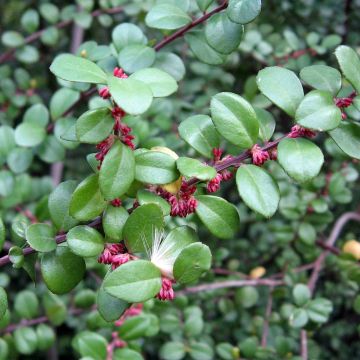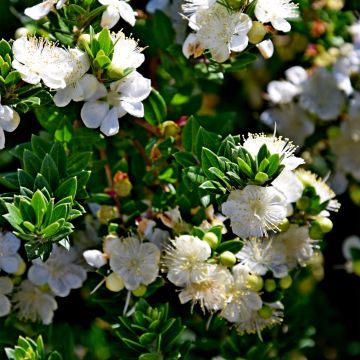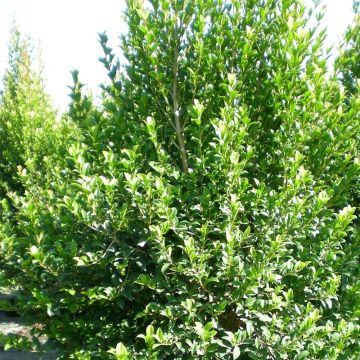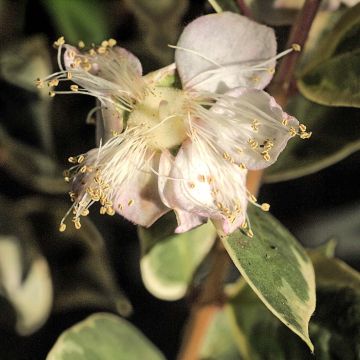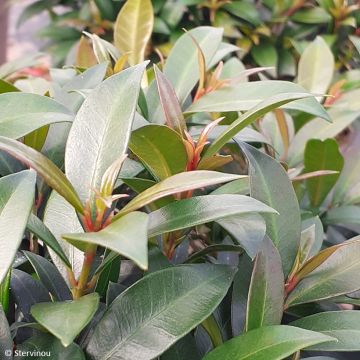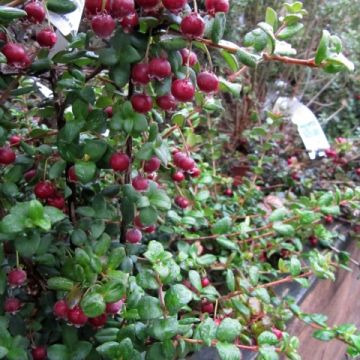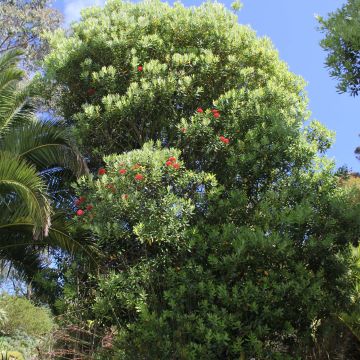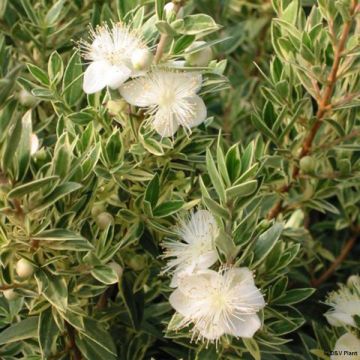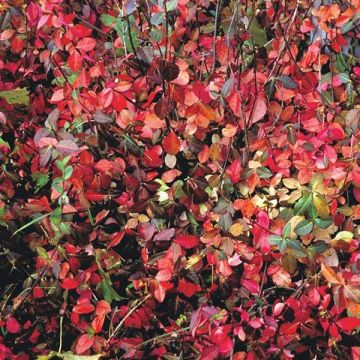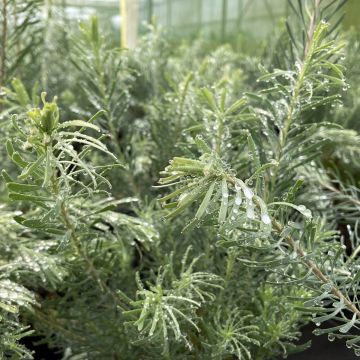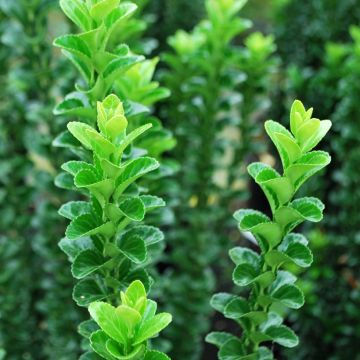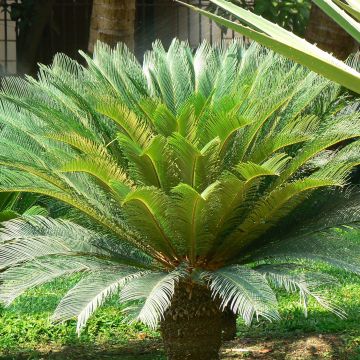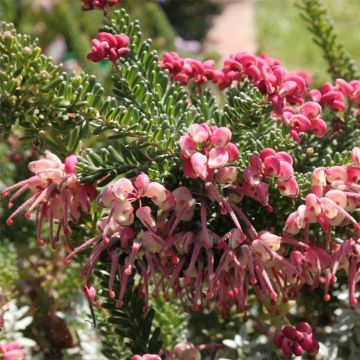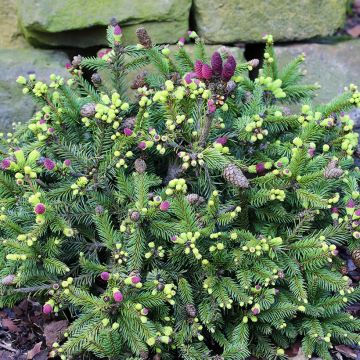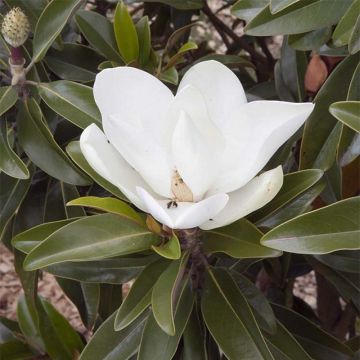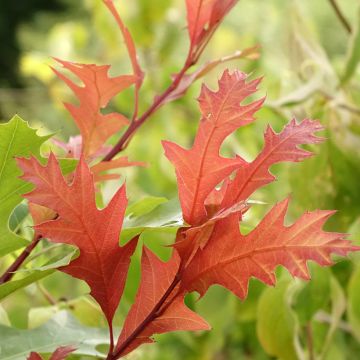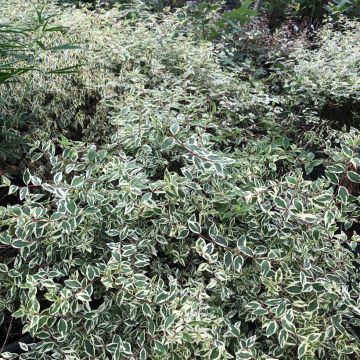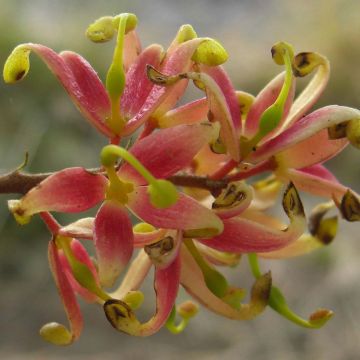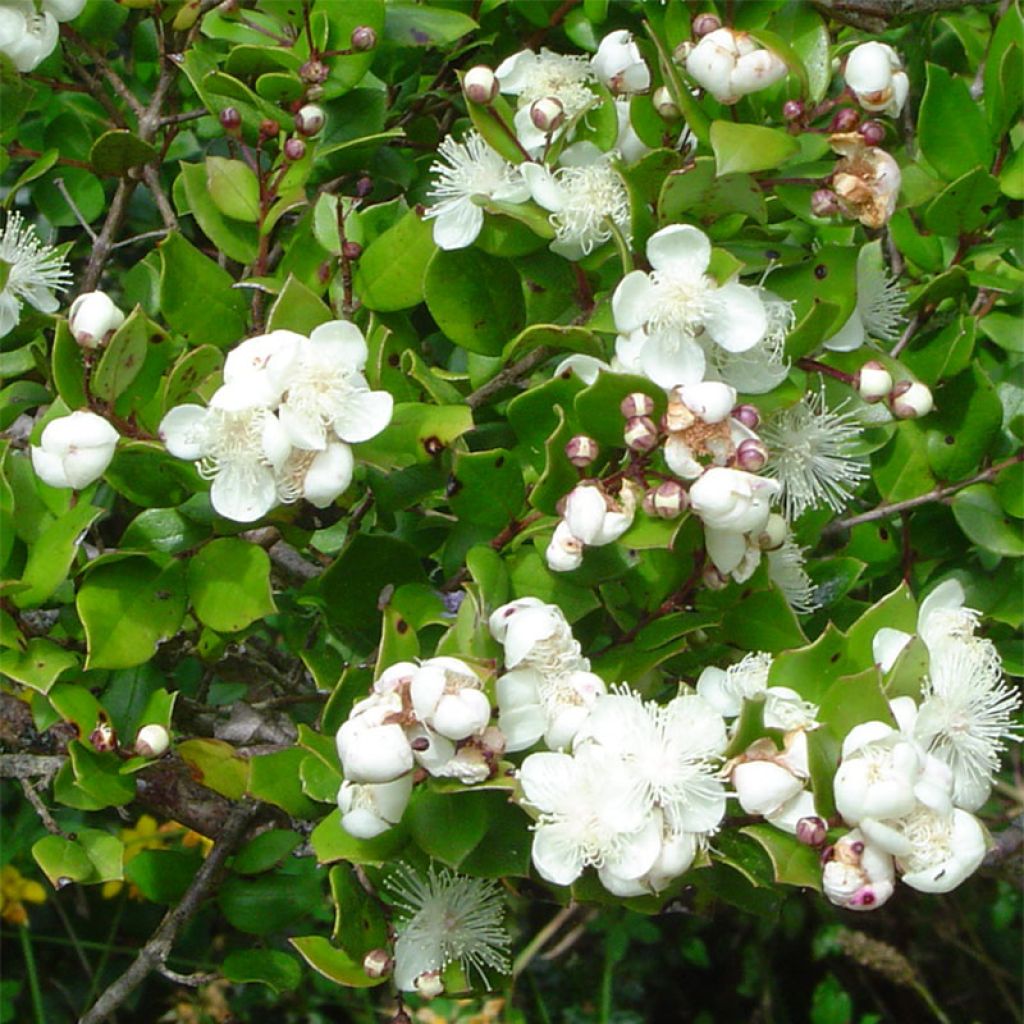

Myrtus luma - Myrte du Chili
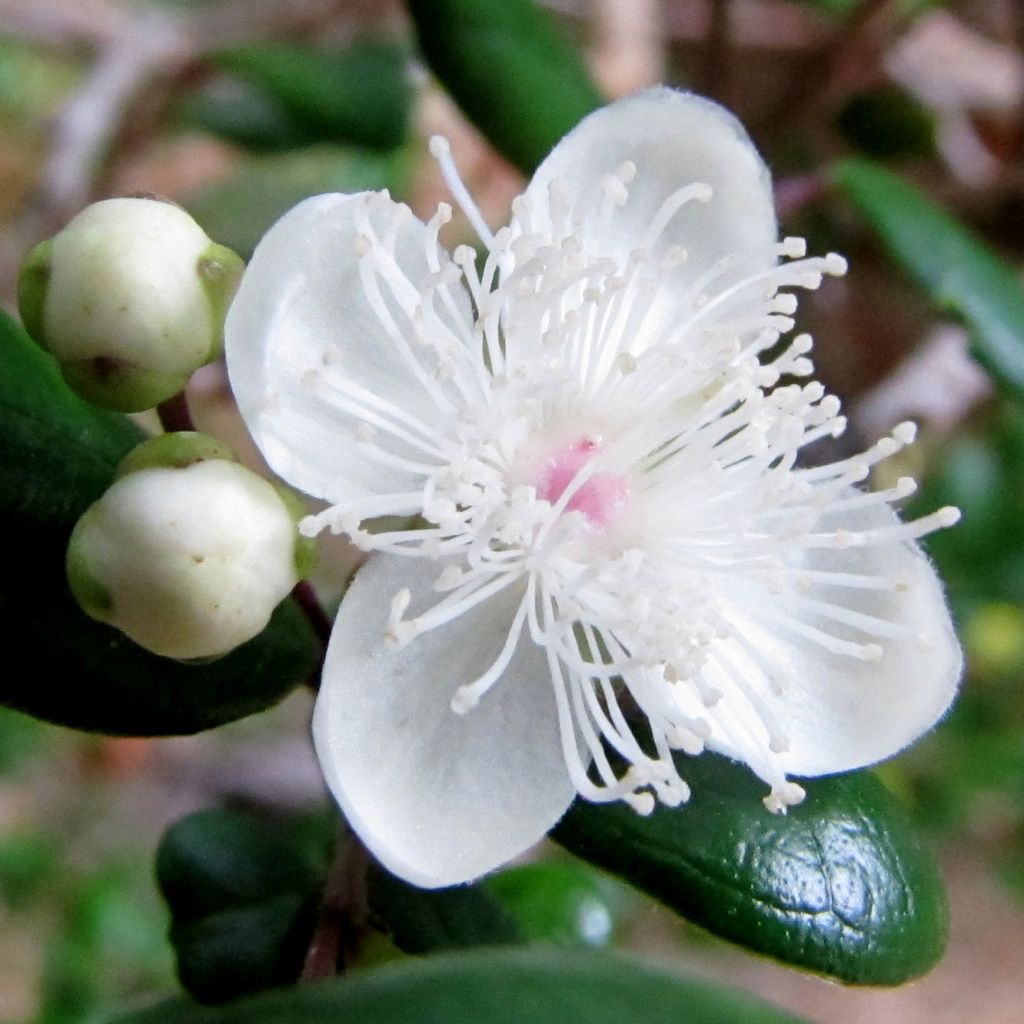

Myrtus luma - Myrte du Chili
Myrtus luma
Myrtus luma
Chilean Myrtle, Arrayan, Shortleaf Stopper, Temu, Collimamol, Palo colorado
Thank you very much. How can I log in?
rssstskfoa, 25/01/2023
This item cannot be shipped to the selected country
Delivery charge from €5.90
Delivery to Corse prohibited
More information
Schedule delivery date,
and select date in basket
This plant carries a 24 months recovery warranty
More information
We guarantee the quality of our plants for a full growing cycle, and will replace at our expense any plant that fails to recover under normal climatic and planting conditions.
From €5.90 for pickup delivery and €6.90 for home delivery
Express home delivery from €8.90.
Delivery to Corse prohibited: UE law prohibits the import of this plant from mainland France to Corse as part of the fight against Xylella fastidiosa. Please accept our sincere apologies.
More information

Does this plant fit my garden?
Set up your Plantfit profile →
Description
Myrtus luma, now named Luma apiculata, is a bush native to Chile and Argentina, preferring the freshness and mildness of oceanic climates to Mediterranean dryness. This large evergreen bush has beautiful cinnamon to orange-coloured sumptuous bark that peels off to reveal shiny wood. From the heart of summer until autumn, its small dark and aromatic foliage is enveloped in a fragrant cloud of small white-cream flowers with protruding stamens. A magnificent subject to be planted in a large pot on a cold climate patio. It thrives in open ground in mild climates, in cool but well-drained soil, in full sun or partial shade.
Myrtus luma, also known as Eugenia apiculata, Myrtus lechlerana or Amomyrtus luma, is a large bush that reaches over 9m (29ft) in height in its natural environment, but rarely exceeds 3m (10ft) in height and 1.5m (5ft) in width in cultivation, especially since it tolerates pruning perfectly. It belongs to the Myrtaceae family, which is found in the wild on the watered slopes of the Andes and not far from rivers. In Europe, the most beautiful specimens grow in Irish gardens. Its growth is very slow and its habit is naturally dense, ramified, and very bushy. The evergreen leaves are round to ovate, leathery, and slightly aromatic. They do not exceed 2cm (1in) in length and 1.5cm (1in) in width. They emerge with a copper colour and then become a shiny dark green. They show a very marked central vein. The honey-bearing bush blooms generously in midsummer, from July-August to September-October. The small white or cream to pink fragrant flowers have 5 petals, and are 1 to 2cm (1in) wide. Grouped in compact clusters of 3 to 5 units, they open into a large bouquet of prominent stamens. They appear in the axils of the leaves, on the current year's shoots, and are followed by the formation of small ovoid, fleshy, edible and aromatic fruits in autumn. The fruits are initially red, then turn black when ripe. The remarkable bark is chestnut to reddish on young plants, then turns orange while peeling off in strips.
Hardy to around -8°C (17.6°F), the Chilean myrtle is a magnificent conservatory plant in cold climates. In a greenhouse or conservatory, it will form an extremely decorative quartet with an orange tree, a Tibouchina and a mimosa, evoking landscapes with exotic charm and fragrance. In mild climates, it can be used as a standalone plant, in the background of a bed, or even on the edge of a woodland. It can also be planted in an evergreen hedge, accompanied by a bushy ceanothus ('Italian Skyes', 'Concha', 'Puget Blue', 'Skylark'), a spring-flowering broom, Leptospermum, or even callistemons with red flowers (Callistemon citrinus 'Splendens').
Report an error about the product description
Myrtus luma in pictures
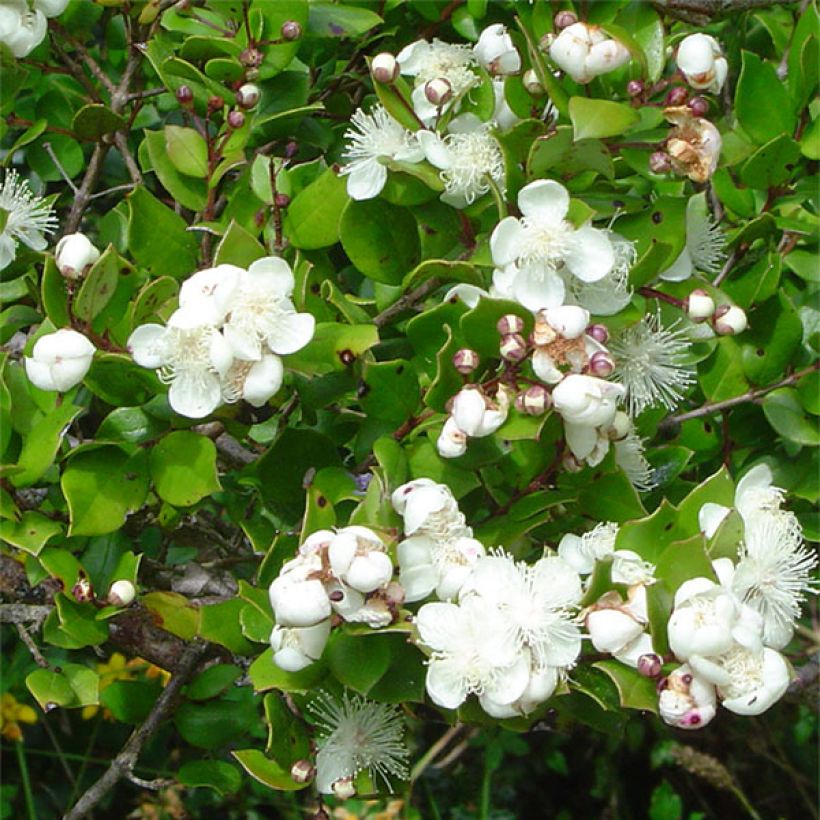

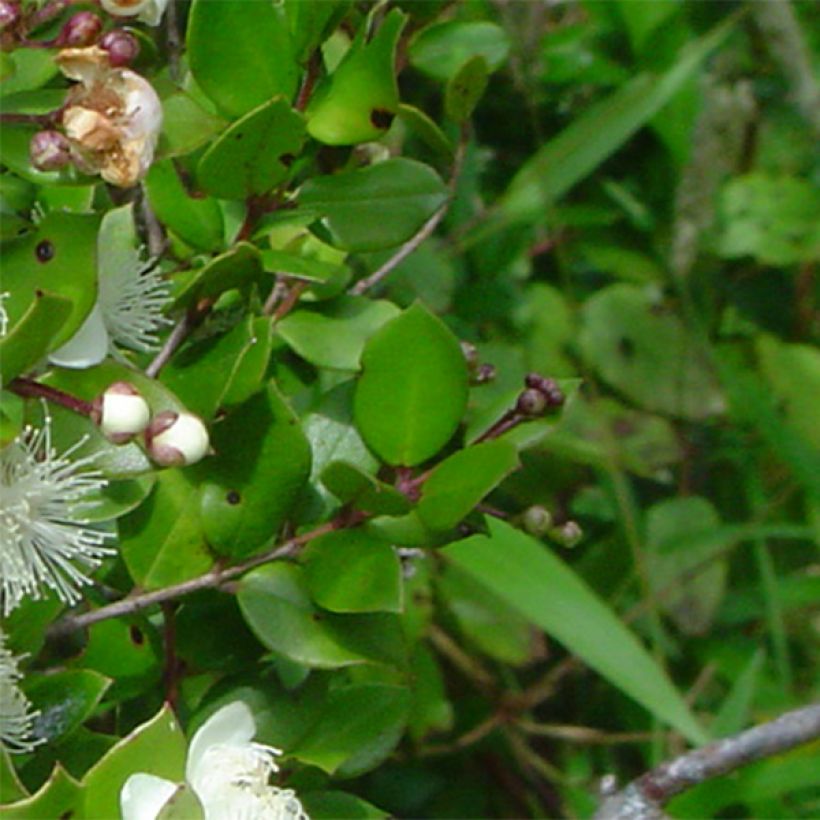

Plant habit
Flowering
Foliage
Botanical data
Myrtus
luma
Myrtaceae
Chilean Myrtle, Arrayan, Shortleaf Stopper, Temu, Collimamol, Palo colorado
South America
Other Myrtus - Myrtle
Planting and care
Myrtus luma will thrive in light, moist but well-drained soil. It especially needs moist soil in summer. Loose soil, whether humus-rich, slightly rocky or sandy, slightly acidic, neutral or even slightly calcareous will do. It tolerates sea spray well. Plant it after the last frost in cool regions, and in September-October in warmer climates. It will flourish in full sun or partial shade and likes to have warm roots. Under these conditions, it is hardy down to -7 or -8°C (19.4 or 17.6°F), and can live for many years. Surround it with a winter protection fleece in colder regions, and insulate it from the cold as much as possible. Place it in the warmest corner of the garden, in full sun against a south-facing wall. However, in regions further away from the sea, grow it in a large pot and store it indoors during winter, in a bright but unheated room. To shape it, you can prune the stems in March-April or after flowering to encourage the plant to branch out.
Cultivation in pots:
Ensure good drainage at the bottom of a large pot. Use a lightweight substrate, enriched with leaf compost, and apply a slow-release fertiliser in late winter and autumn. Water generously in summer, allowing the soil to dry out slightly between waterings. The more you water, the more your myrtle will flower.
Planting period
Intended location
Care
-
, onOrder confirmed
Reply from on Promesse de fleurs
Evergreen shrubs
Haven't found what you were looking for?
Hardiness is the lowest winter temperature a plant can endure without suffering serious damage or even dying. However, hardiness is affected by location (a sheltered area, such as a patio), protection (winter cover) and soil type (hardiness is improved by well-drained soil).

Photo Sharing Terms & Conditions
In order to encourage gardeners to interact and share their experiences, Promesse de fleurs offers various media enabling content to be uploaded onto its Site - in particular via the ‘Photo sharing’ module.
The User agrees to refrain from:
- Posting any content that is illegal, prejudicial, insulting, racist, inciteful to hatred, revisionist, contrary to public decency, that infringes on privacy or on the privacy rights of third parties, in particular the publicity rights of persons and goods, intellectual property rights, or the right to privacy.
- Submitting content on behalf of a third party;
- Impersonate the identity of a third party and/or publish any personal information about a third party;
In general, the User undertakes to refrain from any unethical behaviour.
All Content (in particular text, comments, files, images, photos, videos, creative works, etc.), which may be subject to property or intellectual property rights, image or other private rights, shall remain the property of the User, subject to the limited rights granted by the terms of the licence granted by Promesse de fleurs as stated below. Users are at liberty to publish or not to publish such Content on the Site, notably via the ‘Photo Sharing’ facility, and accept that this Content shall be made public and freely accessible, notably on the Internet.
Users further acknowledge, undertake to have ,and guarantee that they hold all necessary rights and permissions to publish such material on the Site, in particular with regard to the legislation in force pertaining to any privacy, property, intellectual property, image, or contractual rights, or rights of any other nature. By publishing such Content on the Site, Users acknowledge accepting full liability as publishers of the Content within the meaning of the law, and grant Promesse de fleurs, free of charge, an inclusive, worldwide licence for the said Content for the entire duration of its publication, including all reproduction, representation, up/downloading, displaying, performing, transmission, and storage rights.
Users also grant permission for their name to be linked to the Content and accept that this link may not always be made available.
By engaging in posting material, Users consent to their Content becoming automatically accessible on the Internet, in particular on other sites and/or blogs and/or web pages of the Promesse de fleurs site, including in particular social pages and the Promesse de fleurs catalogue.
Users may secure the removal of entrusted content free of charge by issuing a simple request via our contact form.
The flowering period indicated on our website applies to countries and regions located in USDA zone 8 (France, the United Kingdom, Ireland, the Netherlands, etc.)
It will vary according to where you live:
- In zones 9 to 10 (Italy, Spain, Greece, etc.), flowering will occur about 2 to 4 weeks earlier.
- In zones 6 to 7 (Germany, Poland, Slovenia, and lower mountainous regions), flowering will be delayed by 2 to 3 weeks.
- In zone 5 (Central Europe, Scandinavia), blooming will be delayed by 3 to 5 weeks.
In temperate climates, pruning of spring-flowering shrubs (forsythia, spireas, etc.) should be done just after flowering.
Pruning of summer-flowering shrubs (Indian Lilac, Perovskia, etc.) can be done in winter or spring.
In cold regions as well as with frost-sensitive plants, avoid pruning too early when severe frosts may still occur.
The planting period indicated on our website applies to countries and regions located in USDA zone 8 (France, United Kingdom, Ireland, Netherlands).
It will vary according to where you live:
- In Mediterranean zones (Marseille, Madrid, Milan, etc.), autumn and winter are the best planting periods.
- In continental zones (Strasbourg, Munich, Vienna, etc.), delay planting by 2 to 3 weeks in spring and bring it forward by 2 to 4 weeks in autumn.
- In mountainous regions (the Alps, Pyrenees, Carpathians, etc.), it is best to plant in late spring (May-June) or late summer (August-September).
The harvesting period indicated on our website applies to countries and regions in USDA zone 8 (France, England, Ireland, the Netherlands).
In colder areas (Scandinavia, Poland, Austria...) fruit and vegetable harvests are likely to be delayed by 3-4 weeks.
In warmer areas (Italy, Spain, Greece, etc.), harvesting will probably take place earlier, depending on weather conditions.
The sowing periods indicated on our website apply to countries and regions within USDA Zone 8 (France, UK, Ireland, Netherlands).
In colder areas (Scandinavia, Poland, Austria...), delay any outdoor sowing by 3-4 weeks, or sow under glass.
In warmer climes (Italy, Spain, Greece, etc.), bring outdoor sowing forward by a few weeks.

































